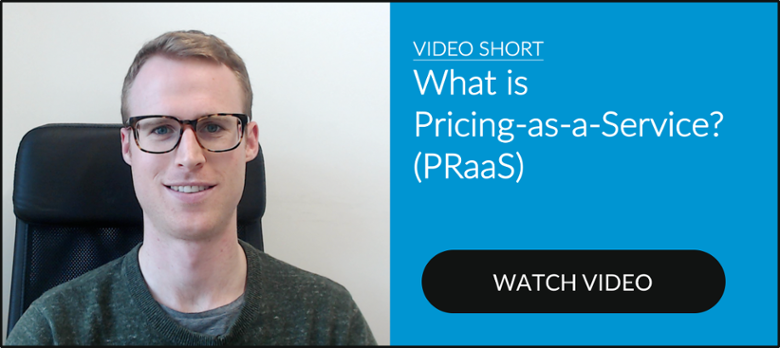"Pricing is the only element in the marketing mix that produces revenue; the other elements produce costs." - Phillip Kotler
Product pricing can be your most powerful tool with which to boost sales. Fact! However, do you often feel uncertain about your current pricing strategy, that it's not "quite right" -
Sometimes it boils down to how you wish your business to be perceived - is it as the retailer who sells below the competition to get loads of sales or the one who sells at a higher price but gains added respect because of the value and service you offer?
Before you decide on your favoured ecommerce pricing strategy there are a few basics that you need to grasp:
The Lowest Price Doesn't Always Win
The reality of ecommerce pricing is that the lowest price doesn’t always get the sale. In fact, getting into a pricing battle with your competitors can end in disaster with you pricing your products much too low. Even with plenty of customers, you may still not realise a profit.
If you are lowering your prices to a point where you are losing money, you should consider either finding cheaper suppliers or adjust your product offerings to include some more profitable items.
When you consistently price too low, your customers will always expect the lower price, even when it becomes unsustainable for your business. Over time you could even lose your most loyal customers, not a risk worth taking.
Realise Your USP
What makes you different? Every company has to tackle this question to determine their value point and target market. For online retailers, a unique factor could be excellent customer service, free and speedy delivery, (e.g. Amazon Prime's "get it tomorrow"), or a unique product you can't find elsewhere.
Not On The High Street has an award-winning website where you can find highly original gifts. The company supports over 1500 British small businesses, providing them with an attractive platform on which to sell their wares.
Their customers know that what they buy will not be available elsewhere. With pricing competition at an all-time high, retailers have to think outside the box when crafting a marketing or promotional strategy for their online store.
Also,
Identify Your Top Selling Products
If you only have a couple of SKUs, this will be easy.
In that case, focus on your 25-50 most popular products (which for many stores represents roughly 50% of their revenue). The best place to get this information is Google Analytics.
Go to the Conversions -> eCommerce -> Product Performance page and you’ll get a formatted report of your top selling items, both from a revenue and a QTY perspective. This will make it easier for you to optimise prices on your best selling items.
Don't be intimidated by Amazon
Don't panic! The cheaper your items, the less important it is that you need to price match Amazon. This is especially true if the product details offered on Amazon.com are limited. What you need is a great landing page with plenty of product pictures and descriptions, which can help you get away with charging a little more.
Also, look to see if the products are "Prime" eligible and how many reviews they have. If there are only a few reviews and customers aren’t able to get it shipped for free within 24 hours you’ve got more wriggle room to charge a bit more than Amazon.
Some Ecommerce Pricing Strategies to Boost Sales
Loss-leading Pricing
This strategy assumes that an item sold below market value will encourage customers to buy more overall.
Using this strategy, ecommerce retailers have the opportunity to upsell, cross-sell and increase the total shopping basket value. Even if the profit is not impressive, this strategy stimulates client interest, opening the door for further transactions.
Choose products that have a low CPA (cost per acquisition) in order to minimise loss. The end goal is to sacrifice losing money on one item in order to make a profit on the rest of the products sold, i.e. cheap shampoos, expensive conditioners.
This tactic can work wonders, especially, when you consider any complementary or additional purchases a customer might make, resulting in a boost in overall sales. However, be aware that when you overdo loss-leading prices the effect can be similar to discounting – consumers will always expect bargains from you.
Segmented Pricing
This is when an ecommerce retailer sets more than one price for a product to different types of customers irrespective of its production and distribution costs
Example. Imagine you have a product priced at £10.
Some potential customers may see this price as too high and never purchase. Other potential customers may be willing to pay £15. If you only set the £10 price, you lose £10 from the people who won’t buy, but at the same time lose £5 from the people who would have paid more, for a total loss of £15.
If you have 3 prices, £5, £10, and £15, you get the £15 from the higher price segment, plus the £5 from the lower price segment and you end up with a total of £20.
Customers can be segmented by volume, attribute, service offering, time of purchase or time used. From a billing perspective, your system will need to set different attributes for customers and apply price changes and discounts to specific segments.
Here are some of the most popular ways to use segmentation as a pricing strategy:
- Channel purchase: customers who purchase online rather than in store can be offered a lower price because the cost to serve this purchase is lower.
- Time of purchase: for example, many items are priced higher before Christmas and drop in price soon after. Fashion-conscious customers will pay a premium to wear the latest styles while those on a budget will wait for an end of season clearance.
- Volume: the larger the volume ordered the lower the price per unit.
- Attribute: for example, hardwood vs laminate.
- Geographical locations: in areas or regions where the customers are less price sensitive, the prices of products are higher, and vice versa.
Segmentation must be done keeping in mind the cost parameters. Further, the perceived value of the product must be constantly assessed and it must be ensured that the image of the brand doesn’t get degraded at any stage due to this activity.
Used properly, a segmented pricing strategy can be very beneficial. However, it’s not the best fit for every business, so make sure it’s right for your company before selecting this pricing strategy.
Premium Pricing or Above Competition Prices
A premium pricing strategy involves setting the price of a product higher than similar products on the market. This strategy is sometimes called skim pricing because it is an attempt to “skim the cream” off the top of the market.
It is used to maximise profit in areas where customers are happy to pay more, where there are no substitutes for the product, where there are barriers to entering the market or when the seller cannot save on costs by producing at a high volume. Do any
Premium pricing can be used to improve brand identity in particular markets
For example, Apple now has 91% of the market in computers costing $1,000 or more. The company has used premium pricing to capture the market for high-end, high-quality computers.
Premium pricing is not generally used when there is direct competition for a product. Competition tends to undercut prices and lead to poor sales. For this reason, premium pricing is often a short-term strategy.
The longer a company can keep its competitive advantage, the longer it can charge a premium price. Many products start out at premium prices, but the price is cut once competitors appear on the market.
Some brands can continue to charge a premium price because their entire brand image is based around luxury. According to John Quelch, of Harvard Business School, it is very challenging for companies to maintain a premium-priced brand while trading as a public company. Luxury brands, such as Prada, often chose to remain private businesses, so they can stay small and exclusive, and continue to use premium pricing.
Unique products usually have the best chance of commanding premium prices and this is especially true of technology products. On the other hand, it's difficult to pull off premium pricing if your usual demographic are price-sensitive and have several other similar and cheaper options.
Pricing for Value
"Pricing is Actually Pretty Simple...Customers Will Not Pay Literally A Penny More Than The True Value of the Product" - Ron Johnson
Value-based pricing ensures that your customers are willing to pay your prices for the value they’re receiving. With this strategy you create an experience for your customers that's most aligned to their expectations whilst at the same time avoiding short-changing yourself.
Customer communication is the key to unlocking the information that you need to implement value-based pricing. Explore what it is that customers most value from your store - is it, for example,
Value-based pricing strengthens your brand name, helps build better customer relationships and ultimately improves your bottom line. Really it's the only true win-win scenario for both you and your customers because customers that are happy to pay for the value they receive are customers that buy again. One study found that increasing customer retention by 5% can increase profits by up to 125%.
A customer-first approach and clear, strong communication will always improve value. Start creating more value for your customer in little ways, and you’ll quickly see what a huge difference it makes across your whole business.
Anchor Pricing
Anchoring refers to the tendency to rely heavily on the first piece of information offered when making decisions and it's a common cognitive bias. If you list both a sale price and the original price on your website this establishes the amount of savings a consumer perceives to be making
If you have an expensive piece of jewellery to sell, say a £1,000 bracelet, the easiest way to sell it is to place it right next to a £5,000 bracelet. Placing premium
Anchor pricing will automatically trigger a response in the consumer of having found a good deal, pushing them to act on their impulsive buying habits. A word of caution though is that these days consumers can readily research the original prices anywhere on the internet and if your anchor price is perceivably unrealistic it could lead to distrust.
Remember to Test your Ecommerce Pricing Strategy
It is vital to measure and test the success of changes you make to your online store's pricing strategy. Ideally, every change should be tested and validated using an analytics tool.
These Pricing Analytics tools can analyse your historical data and make recommendations to increase or decrease specific prices in order to either increase profitability or drive revenues.
For example, Pricing Analytics will reveal if your ‘Summer Sale’ increased your conversion rate, or if the newer products in your ecommerce store are generating more profit than older products.
Which Ecommerce Pricing Strategy Will You Choose?
Building an online business involves a lot of experimentation to understand
The best ecommerce pricing strategy may be one or more of those outlined here. As you will be all too well aware, consumers take advantage of all the latest technologies and trends so online retailers must have the latest strategies, tools, tactics, and prices to remain in contention.
In order to boost
Related Posts
Pricing Ideas to Boost Sales in Retail
6 eCommerce Pricing Experiments That You Can Run Today
Here Are Effective Revenue Management Strategies You Can Use Today
Stop Letting Your Competitors Race Ahead Of You - Here's How To Grow Your Profit Margins
Why is a Pricing Strategy the Key to Selling in Online Retail?
BlackCurve Ecommerce Pricing Guide
Sources
http://www.ecommercefuel.com/ecommerce-pricing-strategy
Andrew Youderian, September 8,
http://blog.fusebill.com/pricing-strategy-segmentation
http://smallbusiness.chron.com/premium-pricing-strategy-1107.html
https://www.bigcommerce.com/blog/value-based-ecommerce-pricing-strategy/
https://www.shopify.com/blog/6532021-6-tips-to-develop-an-ecommerce-pricing-strategy
Priceless: The Hidden Psychology of Value by William Poundstone 2011



